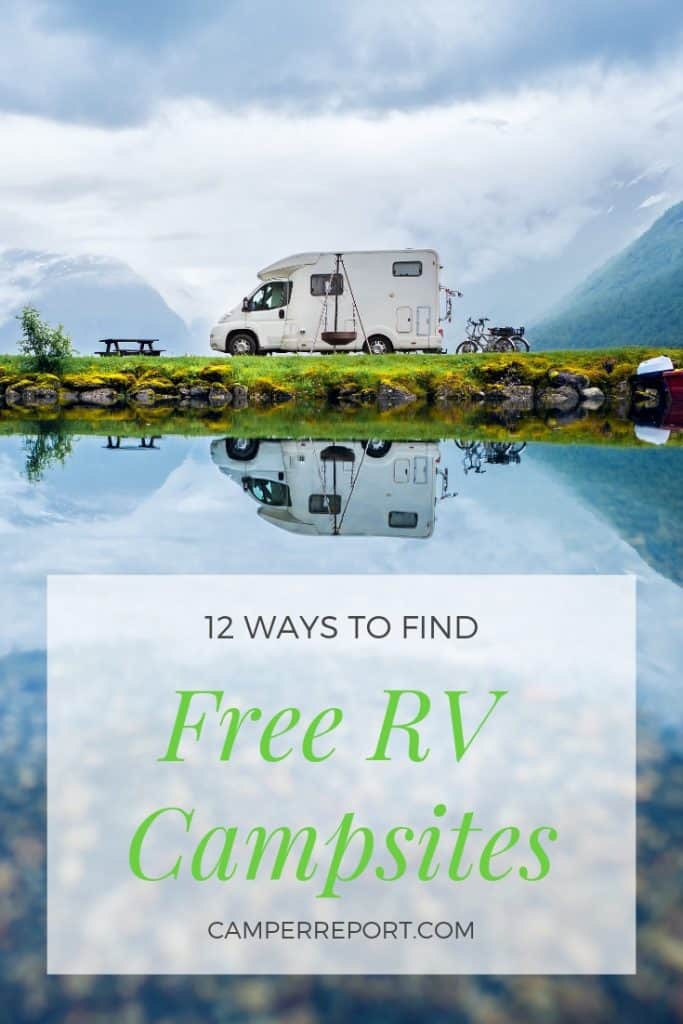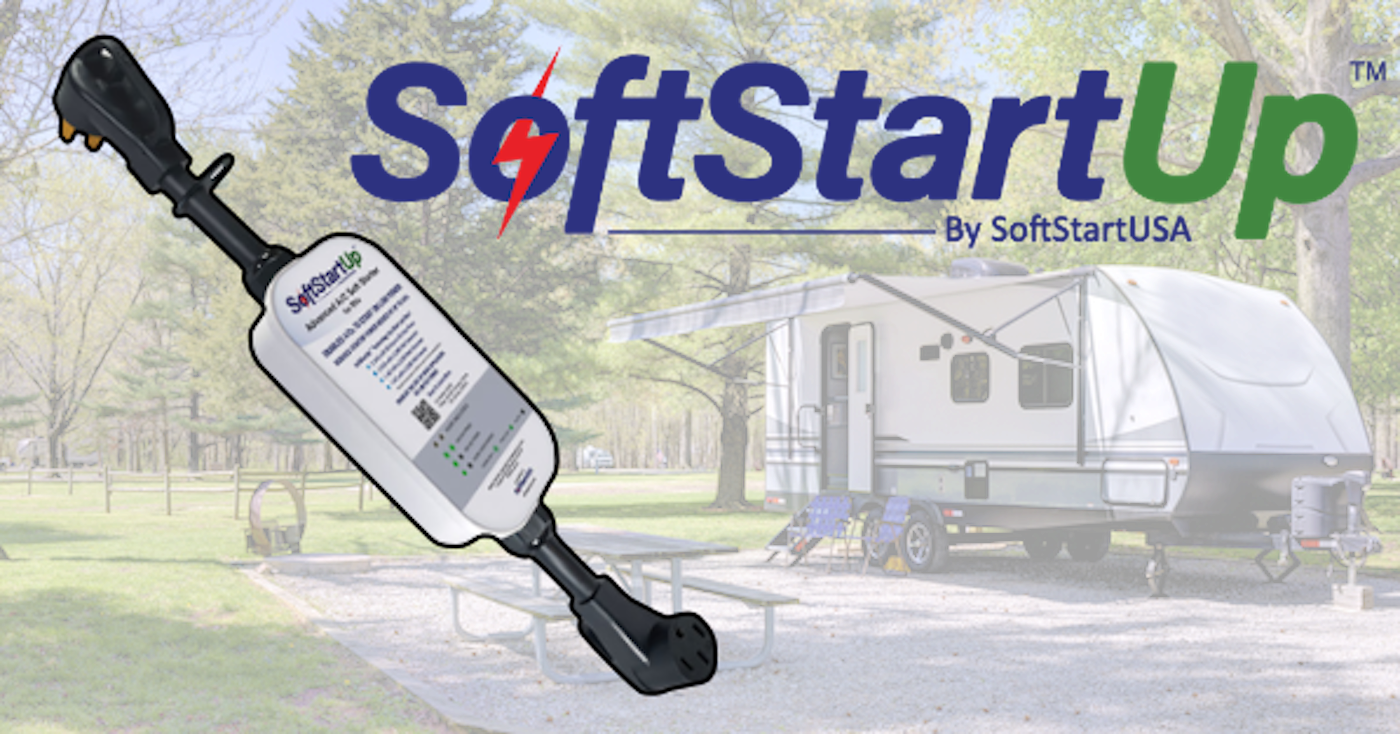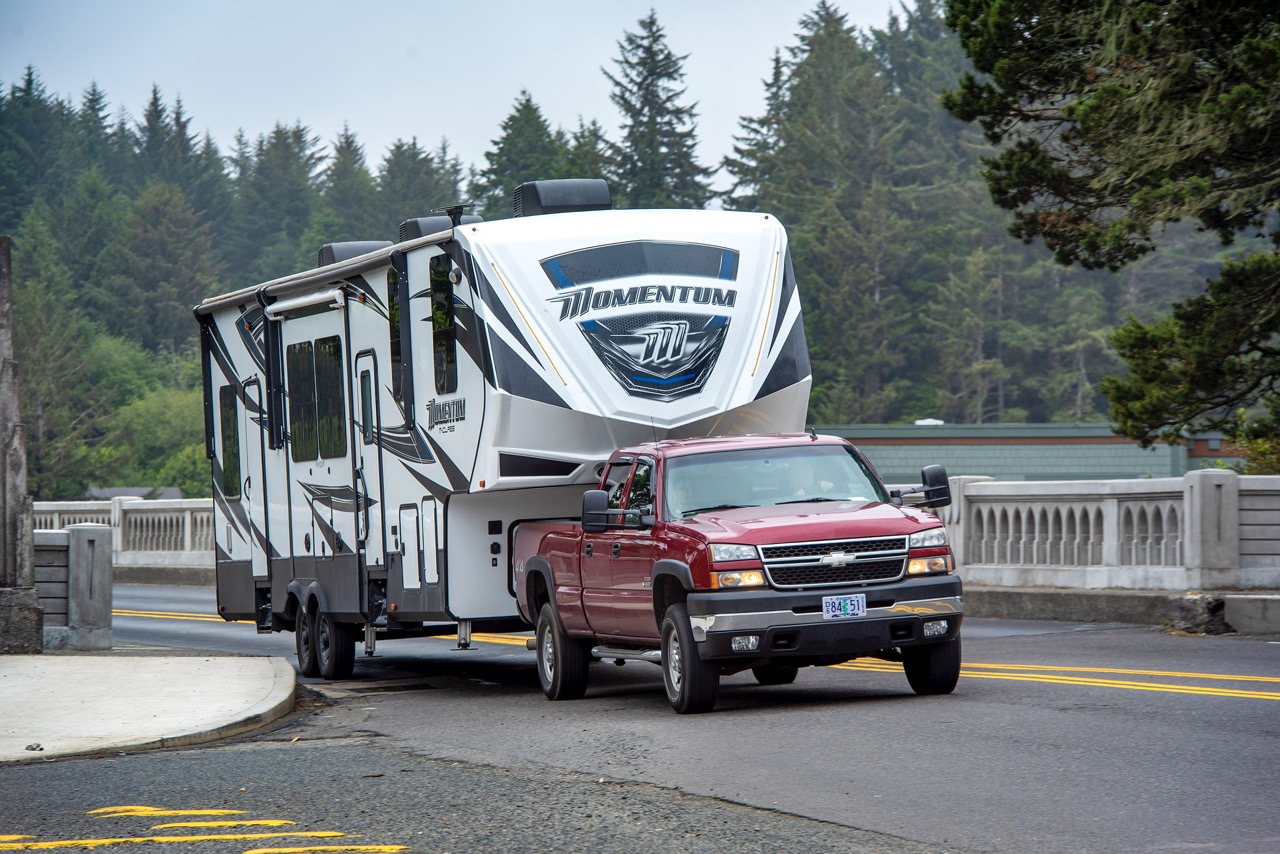
Boondocking in an RV just means that you find a way to camp for the night (or for a few nights) for free instead of paying expensive rates to check in at a campground. Oftentimes this means that you won’t be able to hook your RV up to electricity or water (or dump your tanks), but this is a great way to save money and continue being able to afford the RV lifestyle.
So, what are some tips for finding free places to camp? Finding a free place to camp at night in your RV is actually easier than you think. Here are a few websites, apps, groups, and tips for finding free places to camp:
- RV LIFE GPS & Campgrounds App
- Campground Reviews
- Boondockers Welcome
- Harvest Hosts
- Overnight Parking
- Truck Stops
- Google Maps
- Benchmark Maps
- The U.S. Public Lands App
- Local Ranger Station
- National Forest Disperse Camping
1. RV LIFE GPS & Campgrounds App
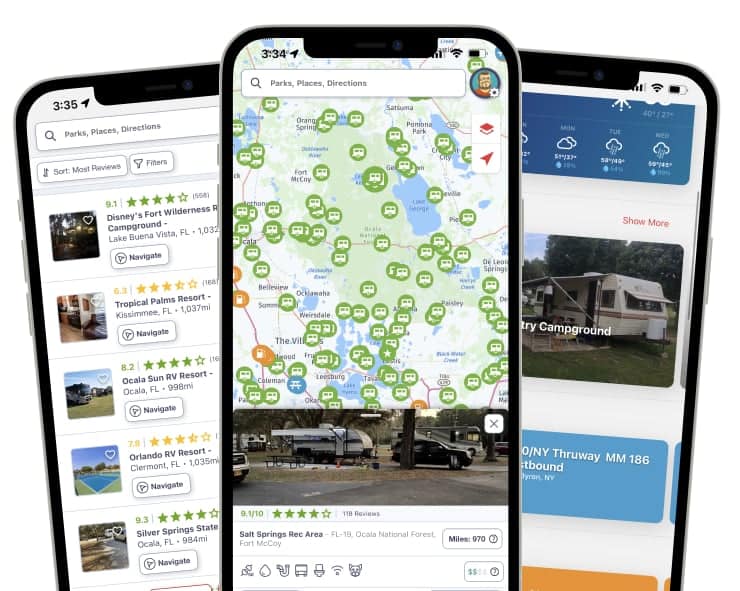
It can be time consuming & tedious to sift through so many RV parks & campgrounds. Advanced filters let you set your preferences so you can find the perfect campsite quickly.
You can search for everything, including state & national campgrounds, private RV parks, price, rating, amenities, affiliations* (Good Sam, Passport America, KOA, FMCA, & more), kid friendly, pet friendly, or big rig accessible.
The app is designed to help you discover what is immediately around you, what’s within a few hours’ drive, and find top destinations that might be farther away.
Explore the location you plan to visit, including places to stay, things to do, the weather, and so much more.
2. RV LIFE Campground Reviews

RV LIFE Campground Reviews is the premier campground finder and review site that RVers have turned to for over 2 decades. The data in Campground Reviews is all provided by real RVers, through reviews that they have submitted, not the campground. RV LIFE Campground Reviews is universally accepted as the most complete, most trustworthy site of campground reviews.
3. Boondockers Welcome
While Free Campsites and Campendium may pride themselves on finding the best campsites to help you get away from the noise, Boondockers Welcome is a way to stay in the city with your RV.
Boondockers Welcome acts a lot like couch surfing. It connects a traveling RVer with a stationary RV host. Most of the time, the hosts are already part of the RV community or were at one point.
This is a great way to make friends, meet new people around the world, and dive deeper into the RV community.
If you go the route of Boondockers Welcome, you will be staying on private property and parking your rig on the driveway of your host’s house (in most cases). There is most often hookups for water and power, and this situation offers close proximity to sites and shopping in the city.
The site Boondockers Welcome has you enter the location of the place you want to stay and then offers you profiles of hosts in the area.
The hosts specify house rules (like no smoking or no pets), how much space they have, the hookups they have available when you can stay and for how long, and how much notice they want.
You can then indicate that you are interested in the dock and contact the host. Most of the time, hosts will let you stay for a couple of nights or a week, and it’s polite to do something nice for them since they are letting you stay for free (like invite them to a barbecue at your RV or something).
This service does actually cost an annual fee for you to participate. If you want to travel and stay at a host’s property, you have to pay $30 a year.
If you are host looking to have RVs stay at your place, you have to pay $22 a year. Despite the cost, this does end up being much cheaper. It is cheaper than one night at most paid campgrounds at any rate.
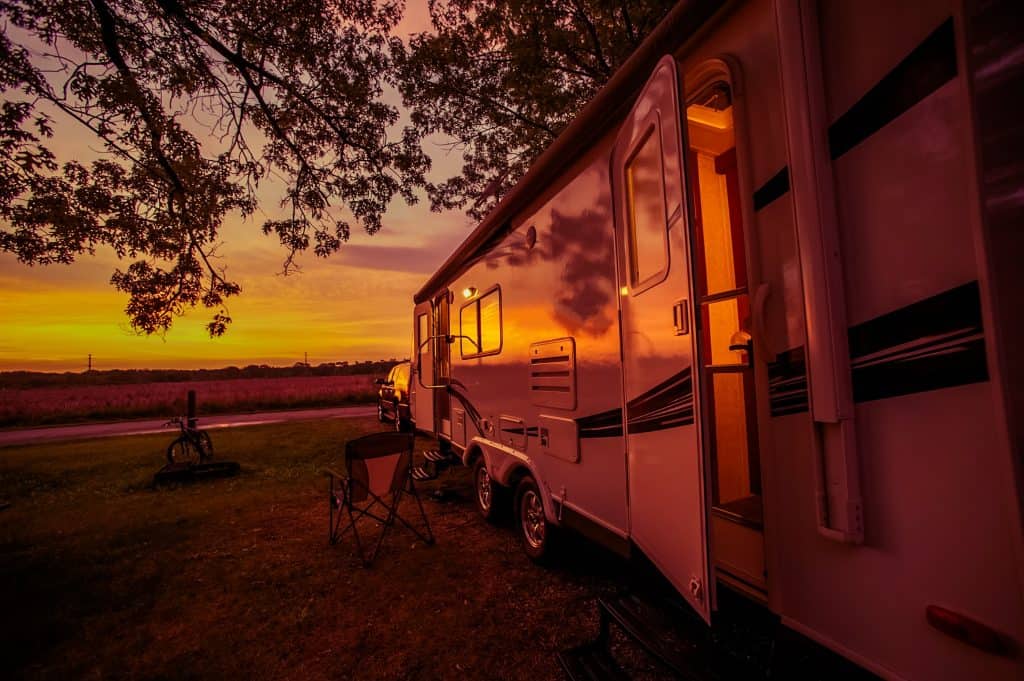
4. Harvest Hosts
Much like Boondockers Welcome, Harvest Hosts gives you a list of private property locations that will let you park your RV for a few days. However, instead of individual hosts, you get to pick a business to host you for a few days, and it’s still free.
Harvest Hosts pairs you will a variety of farms, museums, wineries, breweries, attractions, and distilleries that agree to act as hosts. Although it is free, it is polite for you to buy something like a bottle of wine in thanks (plus you’re treating yourself as well at the same time).
This service allows you to stay at a number of unique and beautiful places (have you seen the pictures of the wineries in California?) and have so many unique experiences.
A lot of RVers choose to use Harvest Hosts when they want to stay somewhere more rural that doesn’t have a lot of campgrounds. They will often stay at farms and take that opportunity to also stock up on produce while supporting a local farmer.
Hookups may not be available at all of the hosts. You can check on the website as well as ask the host when you contact them.
5. Overnight Parking
Although overnight parking may not be the most glamorous, it is a very cost effective way to travel full time in an RV.
The most common places to park your RV overnight are Walmart, the Home Depot, Cracker Barrel, and believe it or not, casinos.
All of these places have video surveillance and are often in good parts of town. They are close to other places you might need to go and provide items you might need to buy.
Walmart is the classic go-to for toiletries and food, the Home Depot stocks everything you need to fix your RV (because you’re going to break down), Cracker Barrel has some tasty meals, and casinos are pretty popular for obvious reasons. Casinos even occasionally have hookups (they want you to stay and play).
Websites like walmartlocator.com and casinocamper.com, as well as Allstays, are great resources to visit when trying to find a place to park overnight.
You might want to call ahead and make sure you actually have permission to park where you want to park and ask if there are any hookups available.
6. Truck Stops
Truck stops were created for the sole purpose of having large vehicles park overnight, so they are great options. Parking there is completely free, but they are popular because of the many services they also provide.
For anyone living on the road, truck stops are like a little oasis. You can fuel up, dump your black and grey water tanks, fill up your fresh water tank, take a shower, lounge in the lounge area, eat at the attached restaurants, buy smaller items you need and snacks, and do laundry.
Often, you can get points for filling up truck stops (if you’re a member) and can use those points to pay for showers, laundry, and food, among other things at the truck stop.
Truck stops are littered everywhere in Canada, the United States, and Mexico, so you’ll never be left wanting. The website truckstopguide.com is a great source to find truck stops near you. The most common ones are:
- Husky
- Pilot Flying J
- Petrol Pass
- TravelCenters of America
- Triple T
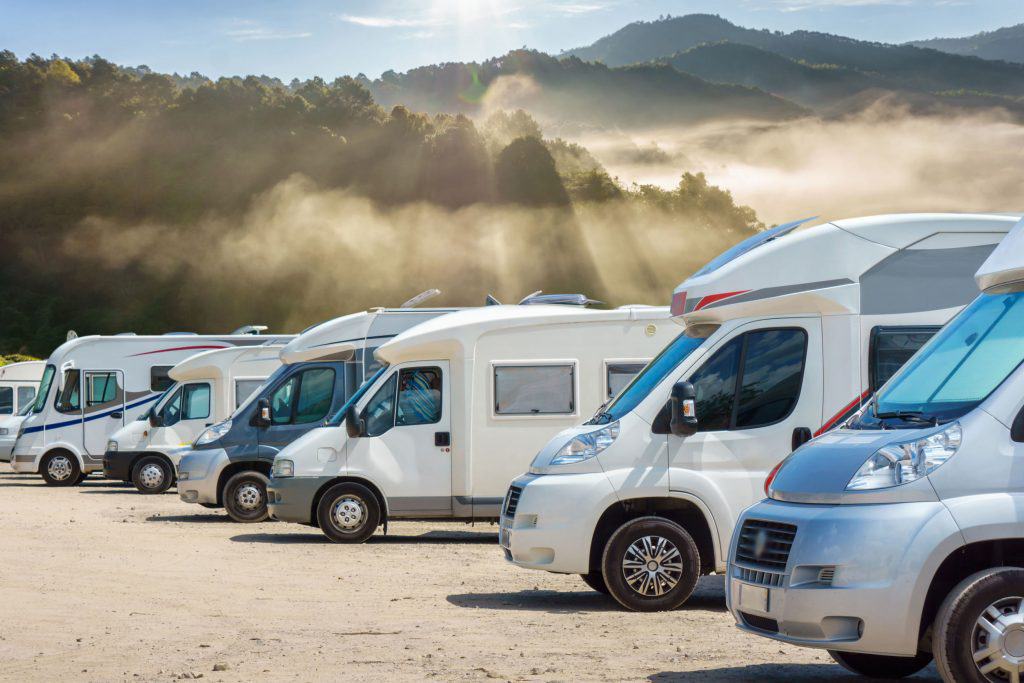
7. Google Maps
On Google Maps, sometimes the most useful searches are “near me” searches. These searches are the kind of searches you enter when you just really have a hankering for ice cream and you have to find the grocery store nearest to you right now or you’re just going to go ballistic.
Well, finding somewhere to sleep at night is slightly more important than ice cream (some people might debate that, and honestly, I would give their arguments some serious consideration), and Google Maps can help you with that too.
When it comes time for you to find a place to boondock for the night, simply put in a search for the nearest Walmart, Cracker Barrel, Home Depot or national forest to you.
In addition to helping out with finding a place to camp, Google Maps is a great resource for double checking listings you find on sights like Free Campsites, Campendium, Boondockers Welcome, or Allstays.
The listings might be slightly off on the sites, especially if it is a newer site like Campendium, and you’re always better safe than sorry.
There are often campsites you can find on Google Maps that you won’t be able to find on websites. Despite our search for peace and quiet, the sites on the camping databases are usually popular or common sites, so they are usually pretty crowded (after all, if more people go there, the more likely the site is to go more public).
If you enter a site on Google Maps, you can scroll out just a bit and you might be able to find a campsite near the one you want, just less popular and less crowded.
Google Maps is also great for helping you navigate your way to some campsites. Some sites, especially those in national forests or state parks, are often hidden away or hard to reach (those are the best places to camp after all).
If you enter the site into Google Maps and then switch over to the satellite view, you’ll be able to see the roads you’ll need to take. Those roads are often small or service roads, so they won’t show up on the default Google Maps view.
One word of caution: when you go to the satellite view, you will be able to see the offshoot roads, but you won’t be able to easily see how easy it will be to navigate the roads.
Make sure you properly assess any roads before trying to drive your rig through them. Take into consideration things like steepness, the weather, mud and dust, rocks, and trees.
8. Benchmark Maps
Benchmark maps are maps put out by the forest service and are specific to a certain state. Because they only have to focus on one state, the maps are extremely detailed, especially when it comes to national forests and parks.
These maps are great for exploring areas a few miles away from featured sites in case you want to find somewhere a little more private (which you probably do).
The benchmark maps will have a lot of maps and information you won’t be able to find online. They picture paved roads as well as dirt roads and the offshoot roads, which are the ones you want to go to find great camping spots.
Most maps don’t really show you the offshoot roads. These maps also have a lot of camping and other recreation information and might list some rule specific to the state you are in that would be important for you to know.
Benchmark maps are really the best option in case you won’t have service or internet connection. If you spend a lot of time in one state, they’re great, and you can even start your own collection. Boy Scout motto: always be prepared, right?
9. U.S. Public Lands App
The U.S. Public Lands App does cost $2.99 in the app store, but it is a great source and works as a superb pairing with the benchmark maps. This app lets you see the difference between land that is owned by these groups:
- Bureau of Land Management
- U.S. Forest Service
- National Park Service
- National Monuments
- Army Corps of Engineers
- U.S. Fish and Wildlife Service
When you know who the land is owned by, you can make sure you don’t break any rules and you can find the best camping spot for you and your RV.
This app also shows you the boundaries of national forests really clearly so you know exactly what you’re doing.
10. Local Ranger Station
Before you enter a new area, a great idea is to phone the local ranger station. Because they are local, they know a lot more than most websites and will probably be able to give you a few different locations to camp that you wouldn’t be able to find by yourself or by surfing the internet.
Sometimes I go into my own local ranger station to find that sort of stuff out and I’ve lived here for almost three years! Seriously, those guys know everything.
The local ranger station will be able to give you details on sites you have in mind. They will be able to tell you what sites have more people and which ones are quieter.
They can give you the scoop on fun things to do in the area while you’re visiting and what kind of area you’re getting yourself into. They can offer suggestions and they know all of the specific rules in their state so you can make sure you don’t break any laws on accident.
Usually, you can find the local ranger station’s number on the lower left-hand corner of the website page when you search for the national forest close to where you will be staying.
Local rangers are one of the best resources you can utilize when trying to find free camping. You can explain to them all of the things you want and they can try and find the best match for you. It’s like a dating app mixed with Google, but way better, way faster, and way more personalized.
11. National Forest Disperse Camping
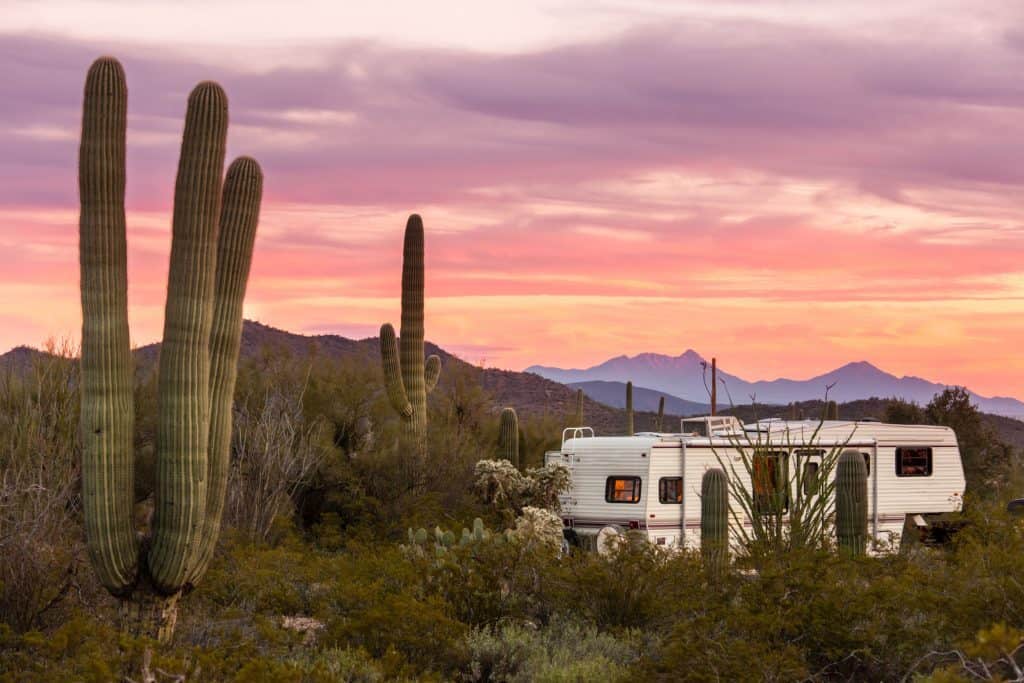
National forests are one of the most beautiful places you can camp, and they have great sites for boondocking and free camping. They call it dispersed camping when you camp for free in a national forest or park.
There are spaces in National Forest that you can pay to camp at, and those sites are usually in the best location for easy access to the other things you can enjoy in the park. However, if you drive a little further in, you can find some great free camping.
Usually, you can find dispersed camping off of forest service roads. You can easily find these roads through local knowledge, the benchmark maps or a quick Google Maps search for “forest service roads near me.”
There will likely be a turn off from the forest service road to some great camping sites. The satellite view on Google Maps will help you be able to find the turnoff road more easily because sometimes they can be a little hidden.
The rules for disperse camping change depending on the state. Make sure you know the rules before just parking your rig. You can call ahead (perhaps to the local ranger station) or check the forest’s website. A blogger who boondocks often wrote these instructions for you:
Find the homepage for your selected National Forest. At that point, we usually click to open the “Recreation” menu over on the left. Then, we click on “Camping and Cabins”. From there, for free boondocking, we click on “Dispersed Camping”. The website will then explain to you where
Free camping is allowed and what amenities if any can be found. Any limitations on how long you can stay are also explained. Beneath that information will be specific dispersed camping areas. When you click on each you will find helpful information such as the nearest town, nearest stores, nearest restrooms (if there are any) and if they are flush or vault, and more
Nadia Bajuelo- roaming remodelers
It is important to realize that not every national forest allows disperse camping, so make sure you check ahead. You don’t want to be caught in the middle of a rainy night with nowhere to park your RV after 10 hours of driving because you didn’t call ahead to make sure that you can actually camp where you wanted to.
12. General Tips for Boondocking
Leave Early
If you’re trying to get to a free campsite, there probably won’t be any way to reserve your spot. Boondocking is usually a “first come, first serve” kind of thing. Leave early and get to your site to make sure you have a spot to park.
If you leave early, you also give yourself time for running into any problems (and there will be some at one time or another). If your original site didn’t work, you’ll have time to adjust and find a new site. Plus, the more time you have, the less stressed you will be.
Take it Easy
Sometimes it can be a little stressful to try and find a place to camp for free. With no guarantees, it can seem scary. Just take a breath. You’re here for the adventure and the freedom.
Don’t get caught up in the small things. Plus, there is always a Walmart you can park at for a night if you seriously cannot find anything.
Be Flexible
You won’t always get the camping spot that you want. You’re going to have to learn how to be flexible. If you can’t find any free camping near the event or sightseeing you want to see, just adjust your trip slightly or be willing to drive a few extra miles to a different campsite. You will be able to see everything you want to see, trust me.
Be Prepared
Have two or three spots picked out in case one doesn’t work out. Always have a backup. Leave yourself room, money, and time for mistakes and mixups.
Research the places you want to go beforehand. You need to know what will be required of you and if you can find a place in the area you want to stay. Plan a week in advance (you still want to feel free, so don’t plan too far ahead, and always stay flexible) so you know where to go and when.
Know the Rules
Even though there are slightly different rules in each state, here are the most common ones for free camping:
- You can stay for 14 days (in national forests)
- When you have to move, you have to move a minimum of five miles
- Park 100 feet from a water source
- Park 150 from the road
- Don’t dump your grey or black tanks right on the ground
You want to know the rules so you make sure you are preserving the environment and that you don’t get in trouble with the law.
Remember There Are Others Like You
Every RVer wants to find free camping, and every RVer wants to feel free, have fun, and make friends. Don’t let a stressful day or a stolen parking spot ruin your chances at doing that.
There will be people after you who want to park where you parked. Take care of the site and leave it cleaner than how you found it. You can also leave a review or make a new entry on a free campsite database to help fellow boondockers out.
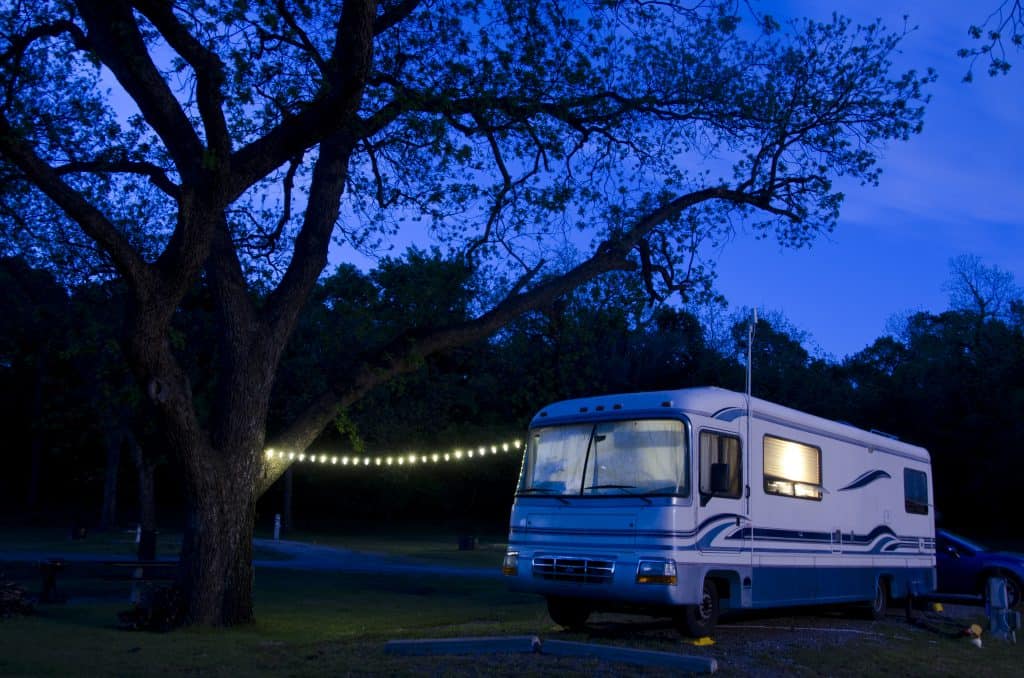
Related Questions:
Can you camp on any public land? National forest land is public land and you can camp there for free (called dispersed camping) as long as you are not blocking roads, gates, or trailheads. Always check ahead to makes sure that dispersed camping is allowed in the district you are considering. However, you cannot just go camp on any public land like the park in town.
How much is one night in an RV campground? One night in an RV campground can cost you anywhere from $30 to $50. It is slightly cheaper if you find a campground that offers a discount if you don’t hook up your RV. Public RV campgrounds are also significantly cheaper.

